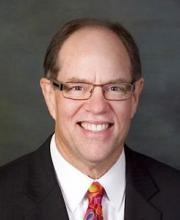District Hospitals’ Important Mission

As the Affordable Care Act continues to alter the profile of healthcare in America, one component of our healthcare system has remained constant in its mission and service to its community: California’s district hospitals.
Created after World War II to address a shortage of access to acute hospital care in many areas of the state, today there are 78 healthcare districts in California operating 43 district hospitals. These hospitals account for 28 of the state’s rural hospitals and 20 of the state’s critical access hospitals.
Unlike many other hospitals or healthcare systems dotting the landscape, healthcare districts are formed by the will of the people, with board members locally and individually elected by their communities. As a public entity, district hospitals and their boards are accountable not to shareholders but to the public that they serve and to the trust that its fellow citizens have placed in them.
Over half of California’s healthcare districts operate in either a health-professional shortage area or a medically underserved area.
These communities would be a far different place to work or live if district hospitals didn’t exist. That is because each healthcare district is uniquely tailored to the specific needs of its community and is focused on ensuring that necessary, quality healthcare services are being provided to the community that created them.
Last year alone, California’s district hospitals served more than four million people and provided $54 million in uncompensated care. In doing so they serve as an integral part of the “safety net” for the state’s underinsured and uninsured residents. In 2012 healthcare districts treated just over one million Medi-Cal beneficiaries, which represent 10 percent of the total Medi-Cal beneficiaries statewide. And in addition to the role they play as a healthcare provider, district hospitals also serve as economic engines in their communities as collectively California’s district hospitals employ more 32,000 individuals in 40 counties.
Beyond providing acute care, in many communities district hospitals are the central, dependable resource for a host of much-needed local resources including emergency care, skilled nursing and long-term care, community and rural health clinics, ambulance services, adult day care, senior housing and nutritional support, chronic disease management, health education, medical transportation, home health, hospice, and more.
While serving the community’s best interest, district hospitals are not immune to the competitive pressures that engulf the entire healthcare industry. If they were to be unresponsive they would likely face serious financial difficulties and ultimately even be forced out of the market place. As a result, to stay competitive district hospitals must be smartly run institutions that adopt a market-oriented approach and strategically select and deliver vital healthcare services.
At Antelope Valley Hospital, for example, in addition to providing a full range of acute care services, we offer a Level II trauma center, a NICU, inpatient adult mental health/psychiatric services and a home health program. We are also the regional sponsor for the federally funded Women, Infants and Children (WIC) Program as well as operate two OB clinics for people who have Medi-Cal or qualify for other state-funded programs. Services provided there include obstetrical care, family planning and cancer detection through “Every Woman Counts Breast Care” (women over 40 with no insurance for breast health).
All of this is made possible – and all Californian’s benefit – because of the vision to create district hospitals more than 65 years ago and the tremendous proliferation of these facilities in the 1950s and 1960s. In its recent designation of Healthcare District Month, the California Assembly and Senate reaffirmed the valuable contribution district hospitals make to assure that California healthcare achieves the triple aim of access, quality and affordability.
Dennis Knox is the chief executive officer of Antelope Valley Hospital in Lancaster.






